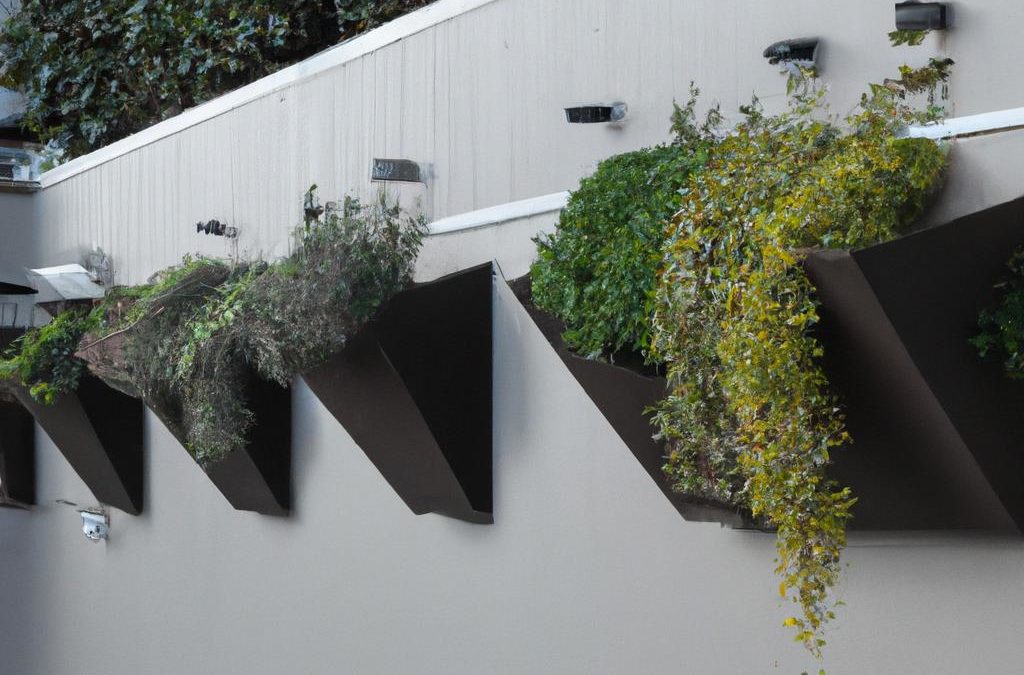Self-watering planters are containers that are designed to water plants automatically, using a built-in water reservoir to supply moisture to the soil as needed. These planters are equipped with a wicking system that allows water to be drawn up from the reservoir and into the soil, providing a consistent source of moisture for plants.
“Self-watering outdoor planters have been a game-changer for gardens. Not only do they save time and effort, but they also help to keep plants healthy and reduce water waste,” Maria Rodriguez, avid gardener
Self-watering planters are an ideal choice for gardeners and homeowners who want to add a touch of greenery to their outdoor space without the hassle of daily watering. They can be used to grow a wide range of plants, including flowers, herbs, vegetables, and more.
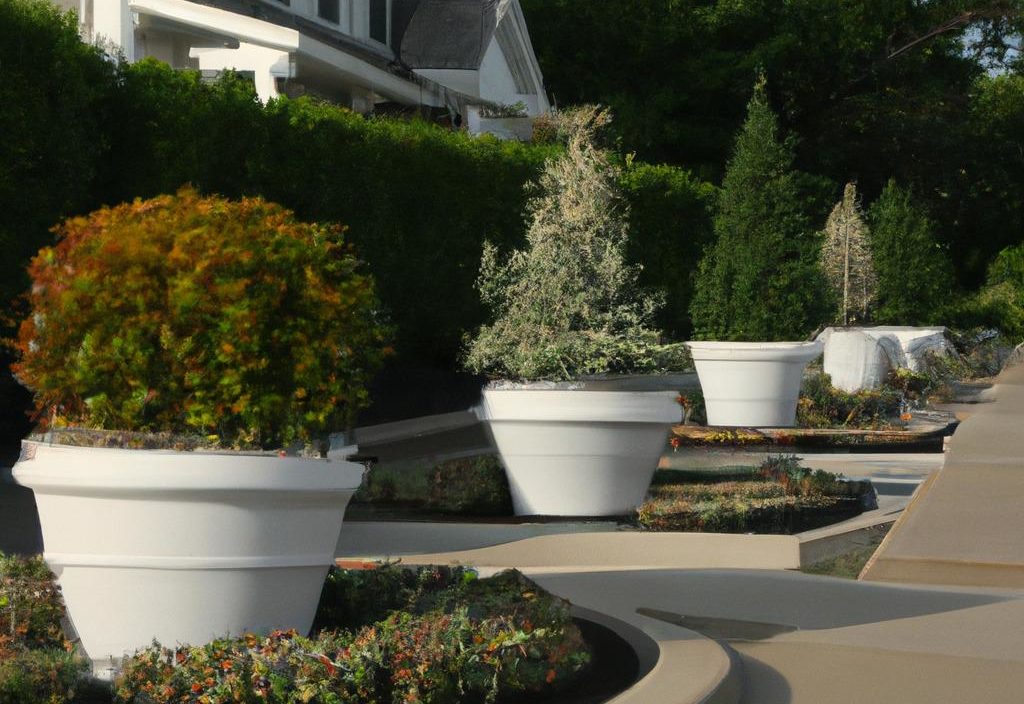
Self-watering outdoor planters are lightweight and their built-in water reservoirs make it easy to move my plants around the garden. In addition, these outdoor planters offer a range of benefits for gardeners.
Benefits of Using Self-Watering Outdoor Planters
Self-watering planters are a practical and environmentally friendly option for gardeners and homeowners who want to add some greenery to their outdoor space. These planters use a water reservoir to supply moisture to plants as needed, reducing the need for daily watering. Additionally, their attractive designs and low-maintenance appeal make them a popular choice for both residential and commercial landscaping.
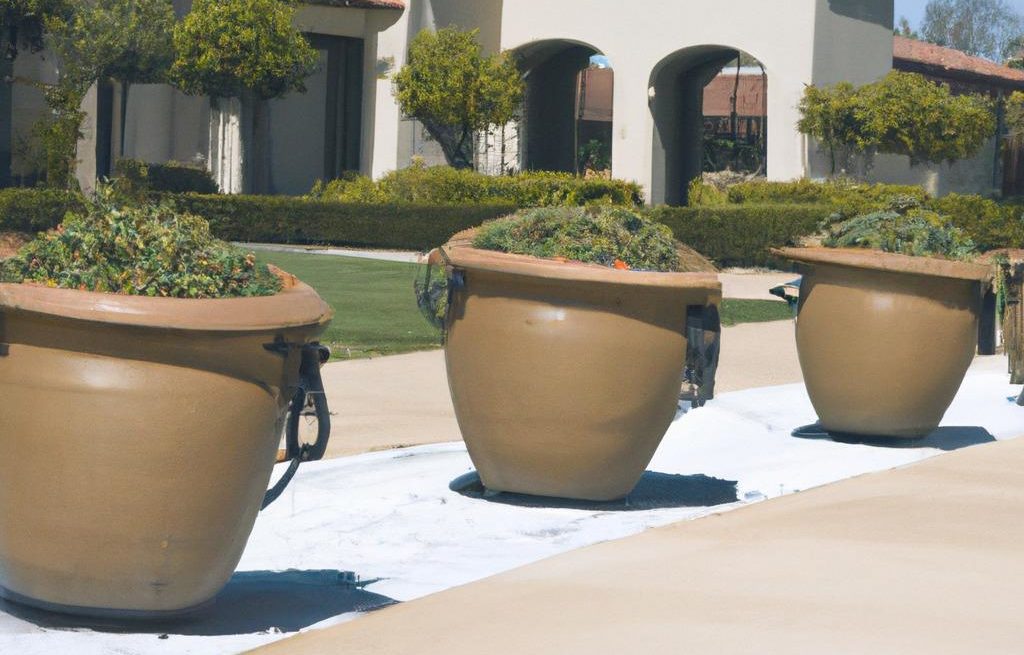
Self-watering planters offer a range of benefits for any garden. Here are 10 benefits of using self-watering planters.
1. Save Time and Effort
One of the biggest advantages of self-watering outdoor planters is their ability to save time and effort. With a traditional planter, gardeners must remember to water their plants regularly, which can be a hassle for those with busy schedules. Self-watering planters, on the other hand, use a water reservoir to supply moisture to the plants as needed, reducing the need for daily watering.
As landscape designer Laura Eubanks explains, “Self-watering planters can be a game-changer for busy homeowners. Instead of worrying about watering your plants every day, you can set it up so they’re watered on a regular schedule, or even automatically based on the moisture level in the soil.”
Not only do self-watering outdoor planters save time and effort, but they’re also more environmentally friendly. By reducing water waste and promoting plant health, these planters help to conserve resources and reduce their impact on the environment.
2. Promote Plant Health
In addition to saving time and effort, self-watering outdoor planters can also promote plant health. These planters provide a consistent source of moisture to plants thus helping them to prevent plants from becoming stressed due to drought or over-watering.
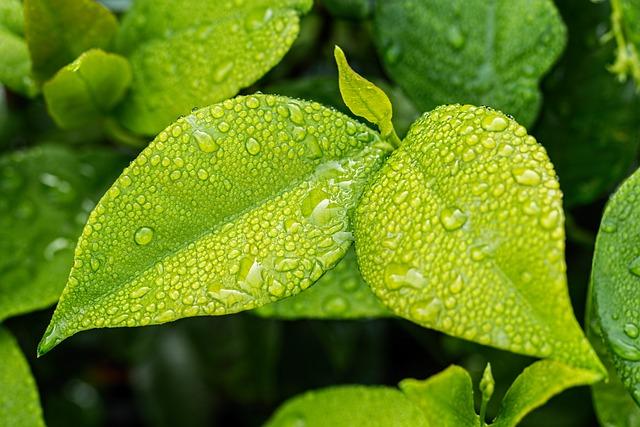
According to horticulturist Jeff Lowenfels, “One of the biggest causes of plant failure is incorrect watering. Self-watering planters can help to eliminate this problem by providing plants with a consistent source of moisture, which can improve their overall health and vigor.”
3. Reduce Water Waste
Self-watering outdoor planters can also help to reduce water waste, as they allow gardeners to control the amount of water that is applied to their plants. By monitoring the water level in the reservoir, gardeners can ensure that their plants are receiving the optimal amount of moisture, rather than overwatering or under-watering them.
“Self-watering planters can be a great way to conserve water in the garden,” says gardening expert Melissa Caughey. “By regulating the amount of water that is applied to your plants, you can reduce the risk of water waste and help to conserve this valuable resource.”
4. Improve Plant Survival Rates
The consistent source of moisture provided by self-watering outdoor planters can also improve plant survival rates, particularly in hot or dry climates. These planters can help to protect plants from the stresses of extreme weather conditions, allowing them to thrive and grow.
As garden designer Debra Prinzing points out, “Self-watering planters can be especially useful in hot or dry climates, where plants may be more prone to stress and wilting. By providing a consistent source of moisture, these planters can help to improve plant survival rates and ensure that your garden stays healthy and beautiful.”
5. Enhance Curb Appeal
Self-watering outdoor planters can enhance the curb appeal of any home or garden. With their attractive designs and low-maintenance appeal, these planters can add visual interest and charm to any outdoor space.
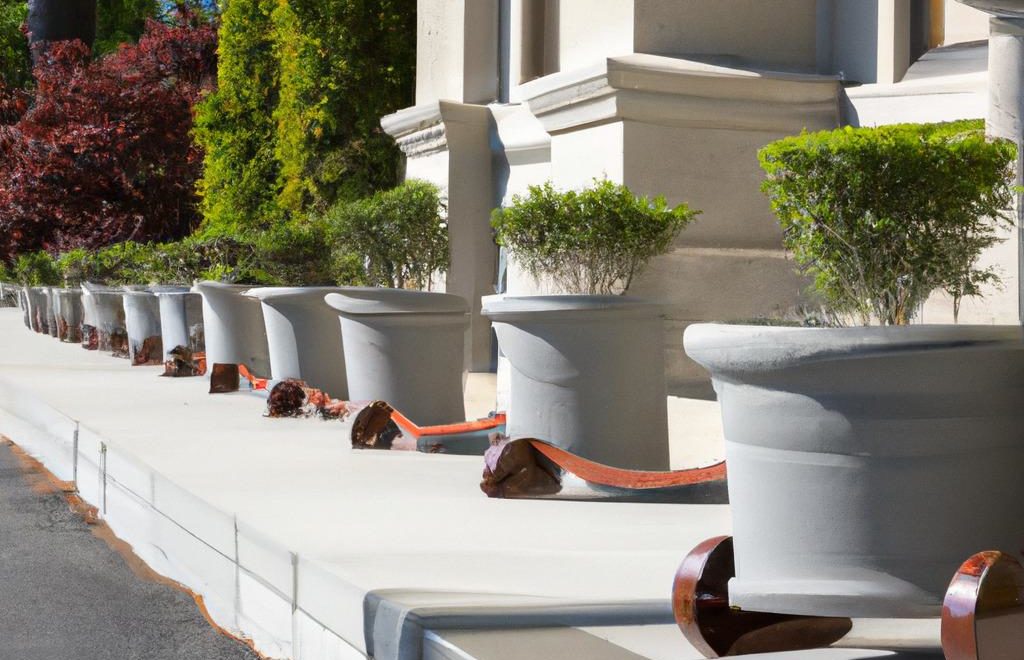
“Self-watering planters are a great way to add a touch of greenery to your outdoor space without a lot of fuss,” says gardening blogger Rachel Mathews. “With their stylish designs and low-maintenance appeal, these planters can enhance the curb appeal of your home and add a touch of beauty to your garden.”
6. Greater Plant Diversity
Self-watering outdoor planters can allow gardeners to grow a greater variety of plants, even in areas with poor soil or limited access to water. With their built-in water reservoirs, these planters can provide the consistent moisture that certain plants need to thrive, even in areas with dry or sandy soil.
7. Convenient for Vacations
If you’re planning to take a vacation and worry about leaving your plants unattended, self-watering outdoor planters can offer a convenient solution. These planters can keep your plants watered for up to a week or more, depending on the size of the water reservoir and the moisture needs of your plants.
“As someone who travels frequently, I appreciate the convenience of self-watering outdoor planters. They keep my plants watered while I’m away and make it easy for me to enjoy my garden when I’m home.” – Michael Thompson, frequent traveler
8. Easy to Use for Beginner Gardeners
Self-watering outdoor planters can also be a great choice for beginner gardeners, as they offer an easy and low-maintenance way to get started in the world of gardening. With their built-in water reservoirs and simple watering schedules, these planters make it easy for even the most inexperienced gardener to keep their plants healthy and thriving.
9. Portable and Flexible
Self-watering outdoor planters can also be a great option for those who want the flexibility to move their plants around. With their lightweight design and built-in water reservoirs, these planters can be easily moved to different locations in your garden or even taken with you on the go.
10. Environmentally Friendly
Finally, self-watering outdoor planters can be a more environmentally friendly choice compared to traditional planters. By reducing water waste and promoting plant health, these planters can help conserve resources and reduce their impact on the environment. Additionally, many self-watering outdoor planters are made from recycled materials, further reducing their environmental footprint.
Types of Self-Watering Planters
There are several types of self-watering planters available on the market.
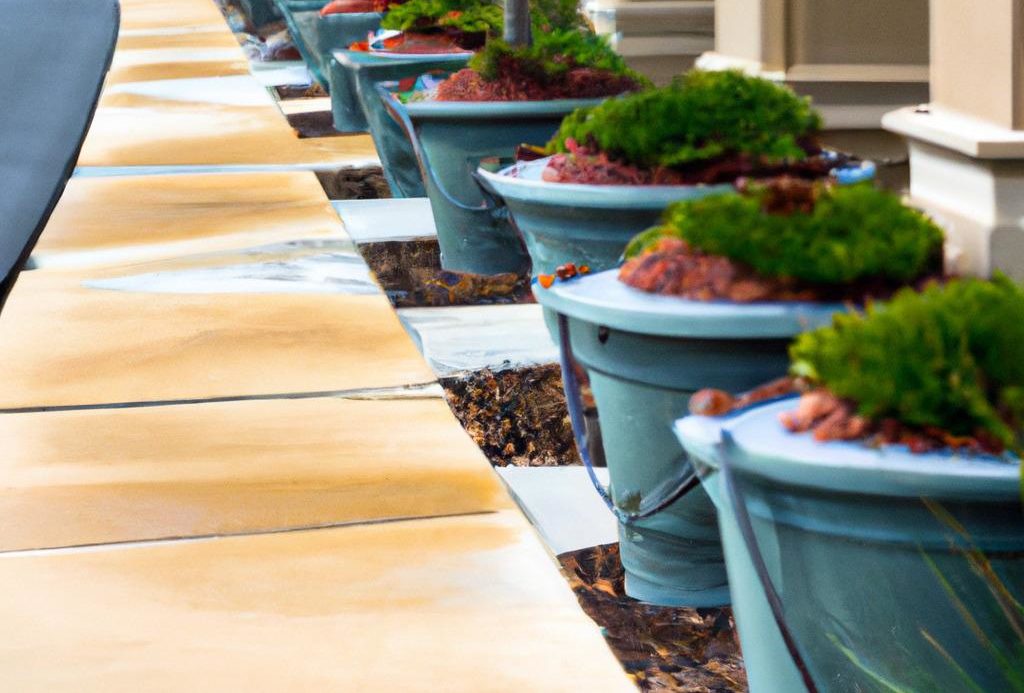
Here are a few common types:
1. Wicking Planters
These planters use a wicking system to draw water up from a reservoir and into the soil. They are often made of plastic and have a simple design.
2. Sub-irrigated Planters
These planters use a system of tubes and channels to deliver water to the plants from a reservoir located below the soil level. They are often made of ceramic or other porous materials.
3. Automatic Watering Planters
These planters use a system of sensors and valves to automatically water the plants based on the moisture level in the soil. They are often more expensive and may require a power source.
4. Self-watering Pots
These are small, self-contained planters that have a built-in water reservoir and wicking system. They are ideal for growing herbs and other small plants.
5. Self-watering Window Boxes
These self-watering window box planters are narrow, rectangular planters that are designed to be mounted on windowsills or balconies. They have a built-in water reservoir and wicking system and are ideal for growing herbs and other small plants.
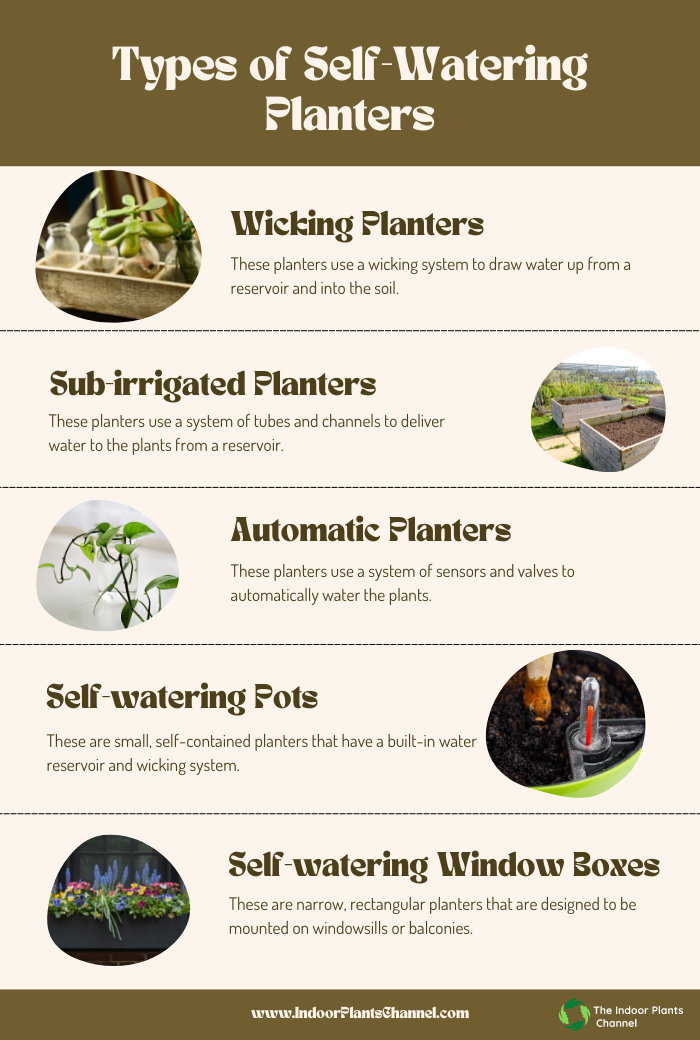
Frequently Asked Questions
- What are the top benefits of using self-watering outdoor planters?
According to landscape designer Laura Eubanks, “Self-watering planters can be a game-changer for busy homeowners.” Instead of worrying about watering your plants every day, you can set it up so they’re watered on a regular schedule or even automatically based on the moisture level in the soil.”
Horticulturalist Jeff Lowenfels adds, “Self-watering planters can help to eliminate the problem of incorrect watering, which can be a major cause of plant failure.”
- How do self-watering outdoor planters promote plant health?
According to gardening expert Melissa Caughey, “Self-watering planters provide a consistent source of moisture, which can help to prevent plants from becoming stressed due to drought or over-watering. This can improve their overall health and vigor.”
- How do self-watering outdoor planters conserve water?
Gardening blogger Rachel Mathews explains, “By regulating the amount of water that is applied to your plants, self-watering planters can help to reduce the risk of water waste and conserve this valuable resource.”
- Are self-watering outdoor planters a good choice for hot or dry climates?
According to garden designer Debra Prinzing, “Self-watering planters can be especially useful in hot or dry climates, where plants may be more susceptible to stress and wilting. By providing a consistent source of moisture, these planters can help to improve plant survival rates and ensure that your garden stays healthy and beautiful.”
- Can self-watering outdoor planters enhance the curb appeal of my home?
Gardening blogger Rachel Mathews says, “Self-watering planters are a great way to add a touch of greenery to your outdoor space without a lot of fuss. With their stylish designs and low-maintenance appeal, these planters can enhance the curb appeal of your home and add a touch of beauty to your garden.”
Conclusion
In conclusion, self-watering outdoor planters offer a range of benefits for gardeners and homeowners looking to add a touch of greenery to their outdoor space. With so many benefits to offer, it’s no wonder that self-watering outdoor planters are becoming an increasingly popular choice among gardeners and homeowners. So if you’re looking to add some greenery to your outdoor space without the hassle of daily watering, consider investing in a self-watering outdoor planter.
Michelle Wilde
Related posts
![]()
About Michelle Wilde
Michelle Wilde is a stay-at-home mom and avid plant lover. Armed with a post-graduate degree in Computer Science (no kidding!), she loves researching plants and landscapes. When she is not caring for her 4 kids, she spends time on her passion for plants. She blogs at www.indoorplantschannel.com, the trusted source for indoor plants.
Learn more
Subscribe
* You will receive the latest posts and updates about indoor plants!
Search
Recent Posts
Categories
- Beginner Guides (10)
- FAQ (206)
- General (2)
- How-To Guides (212)
- Indoor Plants (214)
- Pest Management (2)
- Plant Problem Solutions (4)
- Seasonal Growing (2)
- Specialized Environments (2)
- Specific Plant Care (3)
- Technical Growing (2)
